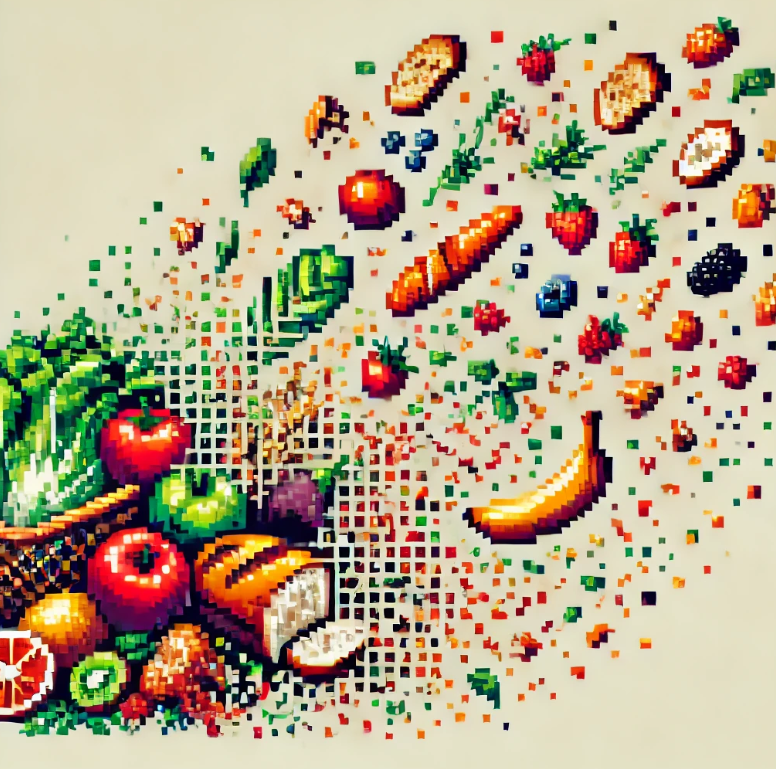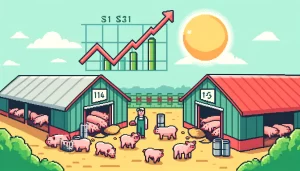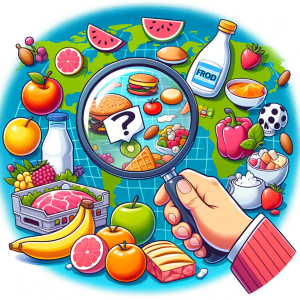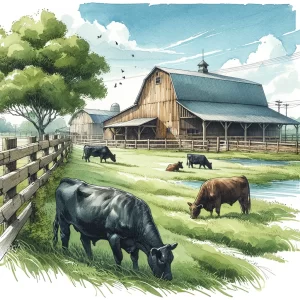
How Ransomware Threatens Our Food Supply
Imagine walking into your favorite grocery store only to find the shelves empty, not because of a natural disaster or a strike, but because of a silent, invisible threat—ransomware. It’s a term that might conjure up images of hackers targeting banks or large corporations, but in reality, it’s lurking in places we least expect, like our food supply chains. This digital menace isn’t just about stealing data; it’s about threatening our access to the most basic necessity—food.
The Silent Saboteur: How Ransomware Attacks the Food Industry
Ransomware is a form of malicious software designed to block access to a computer system until a sum of money is paid. The food industry, with its sprawling, interconnected global supply chains, has become an enticing target for cybercriminals. The digitization of food production, processing, and distribution has revolutionized the industry, making it more efficient but also more vulnerable to cyberattacks.
Picture this: a ransomware attack hits a major food processing plant. Operations grind to a halt. Raw ingredients spoil, production lines stop, and the ripple effects travel down the supply chain, impacting everything from grocery stores to restaurants. The attackers, often anonymous and operating from afar, demand a ransom to restore access to the system. Meanwhile, consumers face the consequences—empty shelves, rising prices, and uncertainty about when their favorite products will return.
Why It Matters: The Real-World Impact of Cyber Threats on Food Security
You might wonder why hackers would target the food industry. After all, isn’t food too essential to be left vulnerable? The truth is, that’s exactly what makes it a prime target. Food production is time-sensitive, and any disruption can have severe consequences. Imagine a scenario where a ransomware attack shuts down a company that supplies seeds or fertilizers at the peak of planting season. The impact isn’t just immediate; it could affect food availability for months, even years.
The JBS attack in 2021, one of the largest meat processing companies in the world, is a stark example. Over Memorial Day weekend, a ransomware attack forced the company to shut down operations across the U.S., Canada, and Australia, leading to a significant reduction in meat supply. The company paid an $11 million ransom to resume operations, but the disruption was felt by consumers and businesses alike, with meat prices soaring by 25%.
The Growing Threat: Ransomware’s Evolution and Its Increasing Sophistication
Ransomware isn’t new, but it’s becoming more sophisticated and widespread. The first known ransomware attack occurred in 1989, but since then, the tactics have evolved dramatically. Today’s ransomware attacks can involve multiple layers of extortion, where not only are systems encrypted, but data is stolen and threatened to be released publicly unless a ransom is paid. This creates a double-edged sword for companies—they risk both financial loss and reputational damage.
The food industry is particularly vulnerable because of its reliance on legacy operational technology (OT) systems that often lack modern cybersecurity protections. These systems, which control everything from refrigeration units to production lines, were not designed with cybersecurity in mind. As food companies increasingly connect their OT systems to the internet for better efficiency and data collection, they inadvertently open themselves up to cyber threats.
A Vulnerable Network: The Interconnectedness of Food Supply Chains
Food supply chains are vast and complex, involving numerous steps from farm to table. This interconnectedness, while essential for global food distribution, also creates multiple points of vulnerability. A ransomware attack on one part of the supply chain can quickly cascade, affecting production, processing, transportation, and retail.
Consider this: A cyberattack on a logistics company could delay the transportation of food products, leading to spoilage and waste. Or a ransomware attack on a water treatment plant could compromise the safety of the water supply, forcing food producers to halt operations. These scenarios aren’t hypothetical—they’ve already happened, and as the food industry continues to digitize, the risks will only increase.
Building Resilience: How the Food Industry Can Defend Against Ransomware
So, what can be done to protect our food supply from these invisible threats? The answer lies in a combination of proactive and reactive strategies. First, food companies need to prioritize cybersecurity by adopting preventive security controls. This includes regularly updating systems, training employees to recognize phishing attacks, and implementing multi-factor authentication to secure access to critical systems.
But prevention isn’t enough. Detective security controls are essential for identifying and responding to threats in real time. This involves using advanced detection tools that monitor for unusual activity, such as abnormal network traffic or unexpected software installations. When an attack is detected, a swift response is crucial to contain the threat and minimize damage.
Finally, corrective security controls must be in place to recover from an attack. This includes having a robust incident response plan that details how to restore systems, communicate with stakeholders, and, if necessary, pay a ransom to regain access to critical data. However, paying a ransom should always be a last resort, as it not only encourages further attacks but also doesn’t guarantee that the attackers will keep their word.
The Role of Government and Collaboration in Securing Our Food Supply
While individual companies play a crucial role in defending against ransomware, the food industry’s security cannot be left to them alone. There’s a pressing need for greater collaboration between the private sector and government agencies to develop comprehensive food defense strategies.
Governments can help by establishing clear guidelines and regulations for cybersecurity in the food industry, much like they do for food safety. Additionally, creating an open ransomware library where companies can share information about attacks and effective countermeasures would be a valuable resource. This kind of knowledge-sharing can help companies learn from each other’s experiences and better prepare for future threats.
Conclusion: The Future of Food Security in a Digital World
As our food supply chains become more digital, they also become more vulnerable to cyberattacks like ransomware. But by recognizing these risks and taking proactive steps to defend against them, the food industry can build resilience against this growing threat.
The next time you walk into a grocery store, consider the complex, digital network that brings food from the farm to your table. It’s a network that needs to be protected—not just to ensure that your favorite products are on the shelves, but to safeguard the very security of our food supply.
What do you think?
- How do you think the food industry should balance the need for digital innovation with the increasing risk of cyberattacks?
- What role do you believe consumers can play in encouraging better cybersecurity practices within the food industry?
Transform Your Science World
Get the latest and most inspiring scientific updates with ‘This Week in Science’! Perfect for educators and science enthusiasts, our free weekly newsletter delivers groundbreaking research and stories that ignite your passion for learning and teaching. Sign up today and transform your approach to science. If you liked this blog, please share it! Your referrals help This Week in Science reach new readers.



